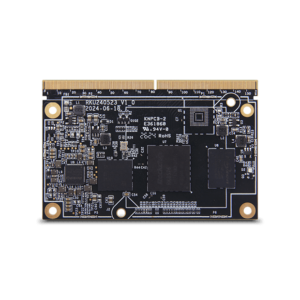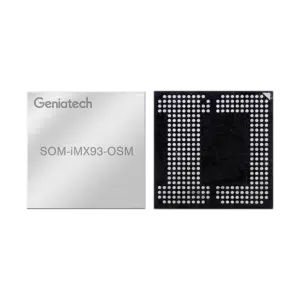How System on Module (SoM) Revolutionizes IoT Development
How System on Module (SoM) Revolutionizes IoT Development
Blog Article
The rapid development of engineering has driven substantial inventions in stuck systems, one of which is the computer on module Working as a connection between custom electronics and off-the-shelf adventures, the SoM is redefining how designers strategy stuck process design. That blog shows the fundamental comprehension of a System on Module and its growing purposes in several industries.

What is a Process on Component (SoM)?
A Process on Module (SoM) is just a compact, ready-to-use table that combines all the primary components of a method on a single module. That on average involves the processor, memory, power management units, and occasionally extra peripherals like Wi-Fi or Ethernet. Unlike a normal single-board pc, an SoM doesn't come with connections and program ports pre-installed, meaning it should be along with a copyright board to create a whole system.
Made to improve growth workflows, the modular character of an SoM enables developers to miss the complicated process of designing and building each individual portion from scratch. By adopting an SoM, companies can focus more on the application-specific characteristics of their products.
Features of Using System on Element
The integration of a whole system on one element gifts several benefits. First, it dramatically reduces the full time necessary for item development. Pre-tested adventures ensure stability, saving weeks of work for executive teams.
Moreover, the scalability of an SoM allows organizations to regulate performance degrees centered on challenge requirements. Like, a low-cost alternative can easily degree right into a high-end product by changing the processor in the component while preserving the provider panel design. This approach decreases executive risks while selling long-term cost-efficiency.
Last but not least, the reliability of an off-the-shelf element guarantees high compatibility with current tools and frameworks, rendering it well suited for both small startups and big enterprises aiming to to enter the market quickly.
Important Applications of SoM in Embedded Methods
The usage of System on Modules spans a few high-demand industries including although not limited by medical products, automation, and consumer electronics.
Medical Products
Reliability and stability are paramount in healthcare. System on Segments with secure control functions are embedded in displays, imaging devices, and lightweight diagnostic tools.
Commercial Automation
Robust and energy-efficient, an SoM is essential for professional get a grip on systems and autonomous robotics. Their scalable architecture supports high-speed information processing and IoT connectivity.
IoT Devices

Client products and services like clever thermostats, wearable products, and also home personnel integrate an ultra-compact System on Component for seamless performance.
The Program on Element continues to achieve footing because of its paid off difficulty and usefulness, cementing it self as a future-proof alternative in the stuck systems sphere. Market leaders are already leveraging these segments, and their range is likely to increase further as technology evolves.
Report this page